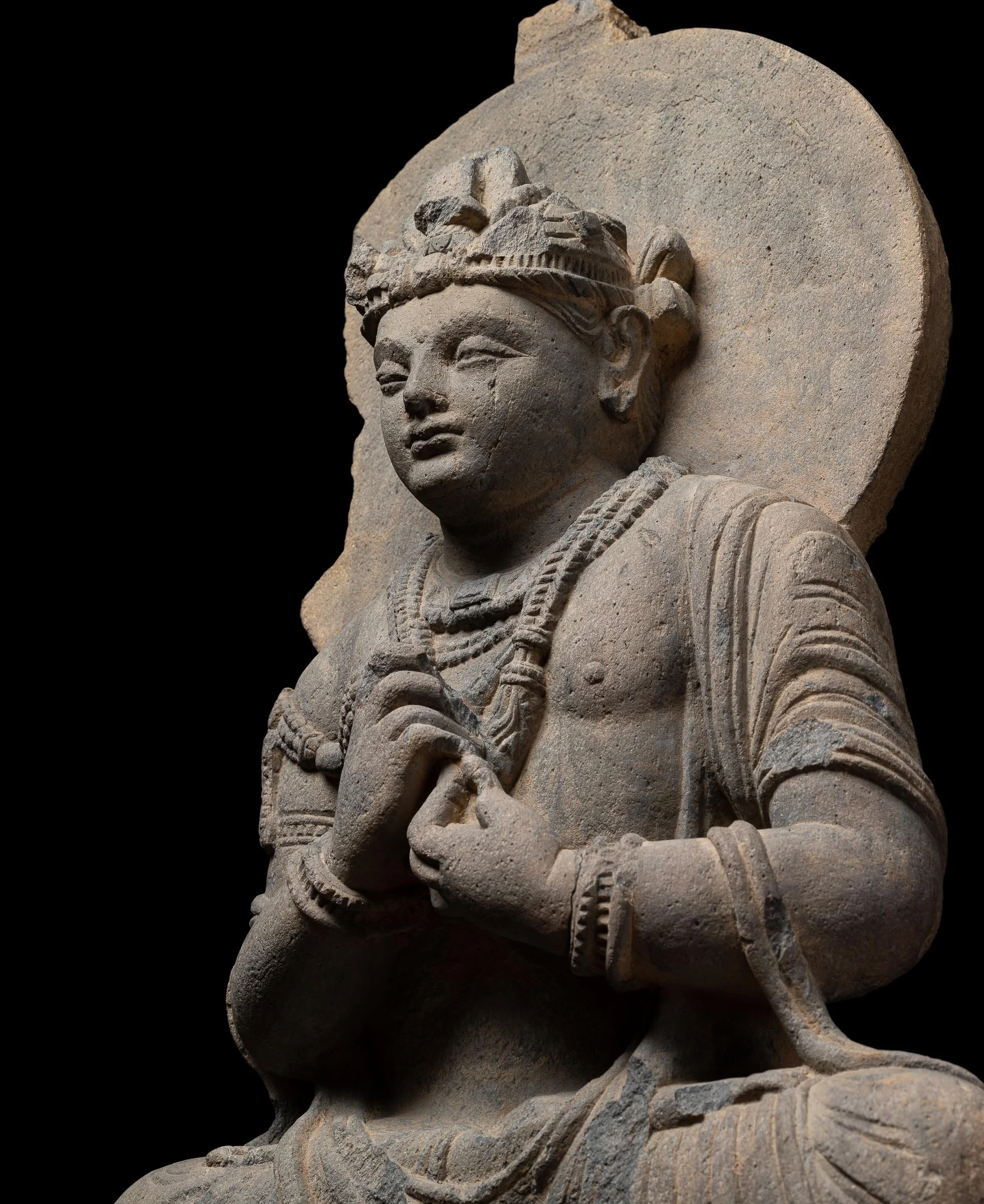a gray schist figure of a seated bodhisattva
The Buddha is seated in dhyanasana with a serene face and the marks of nobility encircled in a halo, with his hands clutching his necklace. The robe drapes over one shoulder, undulating in high relief across the torso, gathering in a fold over the legs and falling over a cushioned seat.
This image of the Buddha clad in robes of draping folds and seated with his hands gently resting in his lap epitomizes the classical style of sculpture coming from the ancient region of Gandhara. Spanning from the 1st through the 5th centuries C.E., the ancient region of Gandharan comprised the northwestern part of the Indian subcontinent and held a vital political and cultural position along the Silk Routes.
The long and dynamic history of the region included epic conquerors, including Darius (550-486 B.C.E.), Alexander the Great (356- 323 B.C.E.) and Menander (342/41 -290 B.C.E.), all of who expanded the Hellenic worldview across the territory. In 60 C.E., when the Kushans conquered the region, their political and economic prowess combined with the refined philosophies of the local Indic Buddhist religion marked an apex of political, religious and cultural syncretism for nearly four centuries, largely influencing distant regions in both Central Asia and China.
The Greco-Roman style, characterized by a symmetry of form, blended seamlessly with the spiritual philosophies of the Mahayana Buddhists. The ideals of human beauty and proportion within the Classical world were easily assimilated to the religious aims of the Mahayana Buddhists, whose ultimate nirvana lay in their practices of selfless service to humanity. At the heart of these teachings was the example of the Buddha, who achieved enlightenment and dedicated his life thereafter to teaching others the path to attain nirvana.
The seated Buddha is the most iconic image of the Gandharan artistic canon, integrating the proportions of the Classical style with the internal meditative equilibrium achieved by Shakyamuni Buddha. The waves of hair rising into a prominent top-knot, the almond-shaped eyes and rounded face framed in a halo, the fall of the drapery over the body and legs, the restful posture of meditation, all seen in this fine example, are hallmarks of Gandharan style.
Gandhara, 2nd/3rd century
-
Blue gray schist
-
25 in. (63.5 cm.) high.
-
Sotheby's New York, 20 March 1997, lot 47.
Sotheby's New York 20 March 2013, lot 267.
-
Himalayan Art Resources, item number 1322





